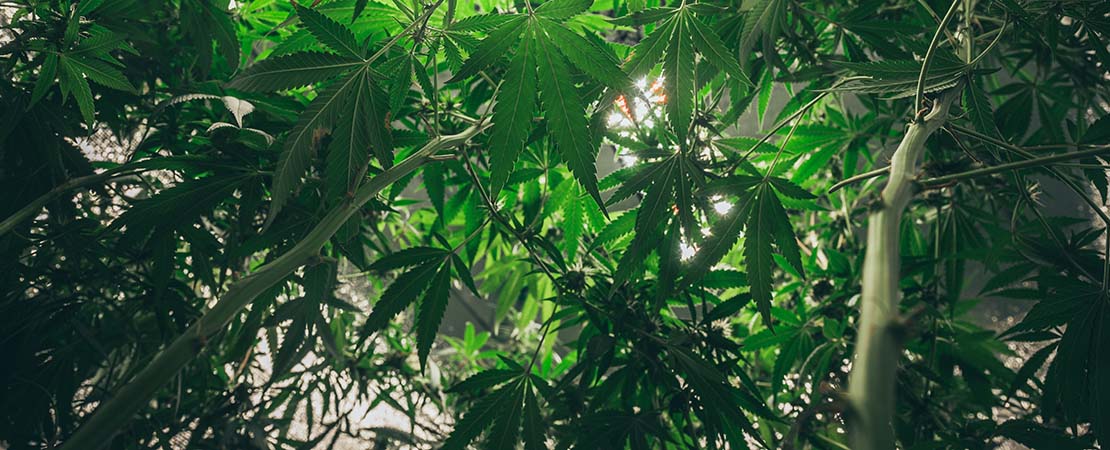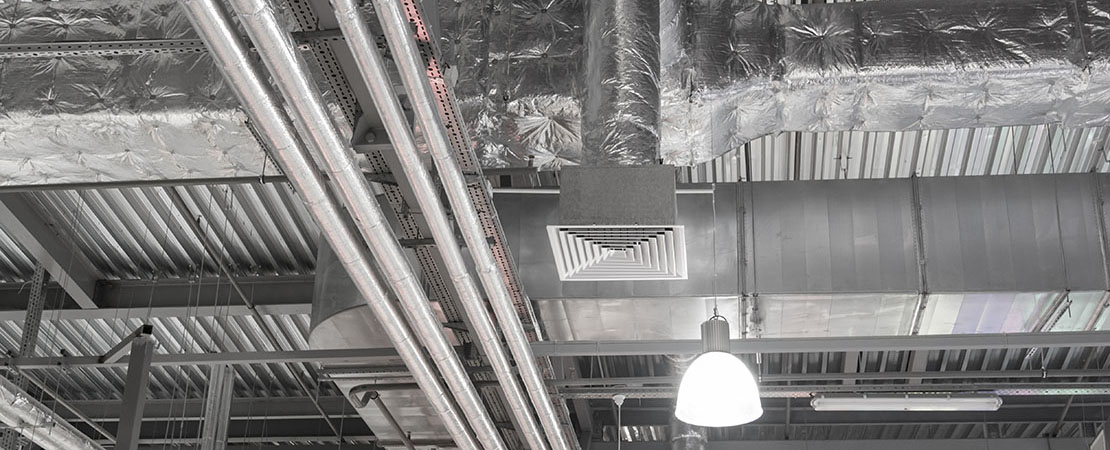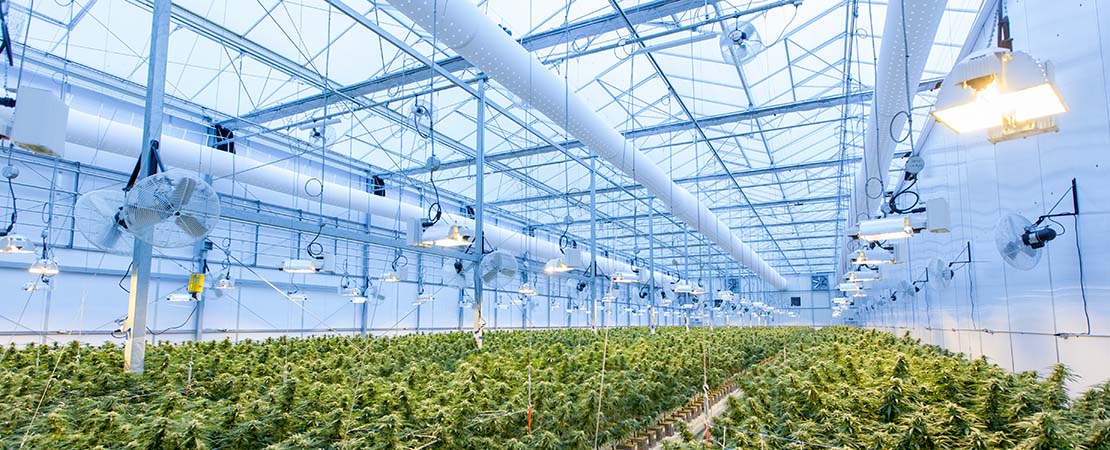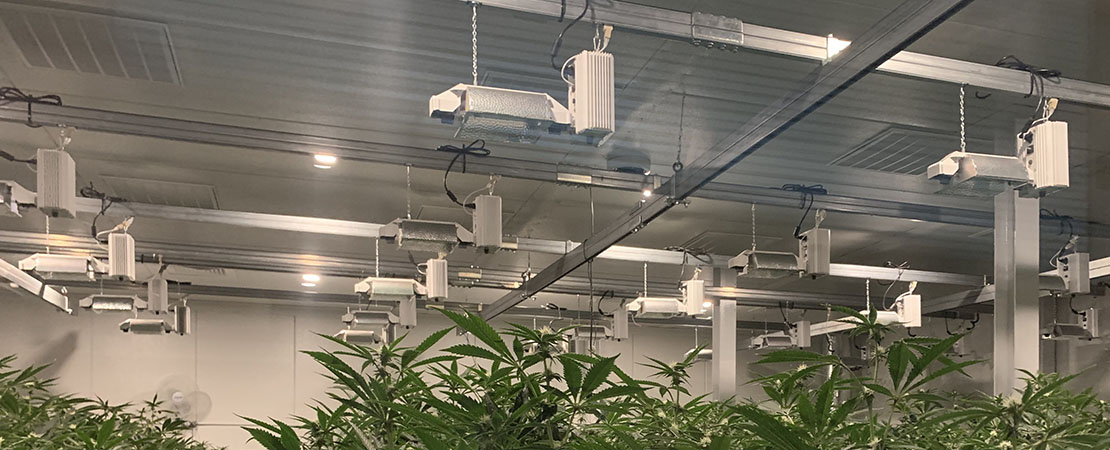Proper Vertical Farming Airflow; Why You Need It
Several elements determine the effectiveness of your grow room. One essential but often overlooked factor is adequate vertical farming airflow, one of the many regulated environmental conditions necessary in an indoor grow operation.
The passage of air into and over each rack in a vertical farm provides unique obstacles that must be overcome. Poor airflow management in a grow room can result in crop death or poor quality buds, resulting in low yields.
Air movement controls various other environmental conditions like humidity and temperature. Proper systems help regulate these conditions in all your tiers resulting in predictable yields.
Why It’s Important To Have Good Vertical Farming Airflow In Your Cannabis Grow Room?
Indoor growing confines your plants to a restricted setting, denying them access to the breeze that cannabis plants require. The airflow strengthens the stems, allowing them to support the weight of cannabinoid-rich buds while also keeping pests at bay. There are a number of different ways that proper airflow helps plants reach their full potential.
1. Controlling Temperature And Humidity
An effective ventilation system provides good airflow, which helps manage heat and humidity levels. Humidity builds up as a result of plant transpiration and irrigation system evaporation.
Too much humidity raises the temperature in a grow room, making it ideal for pests and diseases to thrive. The installation of dehumidifiers is required to deal with high humidity levels. This equipment has a variety of applications that affect airflow in your warehouse, which we’ll go over later.
2. Structural Strength Of Plants
Just as we need to work out our muscles in the gym to make them stronger, plants need the same stress on their stems. The stress aids in developing the cannabis plants’ capacity to hold both their blooms and their own weight
3. Protection Against Pests And Mold
Mold and spider mites thrive in stagnant, damp environments. Wet topsoil attracts pests, which can cause problems for your crops. Their reproductive cycle can be slowed by using fans to dry the soil. On the other hand, a continuous breeze produces an unfavorable habitat for bugs in the first place. You may need to sterilize the contaminated soil using hydrogen peroxide.
4. Control CO2
CO2 is required for plants to produce nutrients and consequently flourish. If you keep your plants indoors, they will eventually deplete the CO2 in the space. Proper ventilation aids in bringing in the valuable material from the outside and distributing it to the plants, resulting in increased growth and yields.
For proper airflow in your grow room, you’ll need a good ventilation system. A ventilation system utilizes several components that work in conjunction with one another to allow you to grow your plants indoors.
Four Main Components Of A Cannabis Indoor Grow Room Ventilation System
The main parts of an efficient ventilation system include:
- Grow room fans– These include intake fans and oscillating fans, which bring in air and circulate it around the grow room
- Exhaust system– The system includes ducting, carbon filters, and fans. They eliminate stale air and excess heat while bringing in cool, fresh air.
- CO2 burners– These are carbon dioxide generating machines.
- Dehumidifiers and ACs– This equipment removes excess moisture hence stabilizing temperatures in a grow space.
A ventilation system also entails calculating the CFM, active and passive air intake, all of which we’ve looked into in detail in our article Ventilation for Your Grow Room: The Beginner’s Guide.
What Is Airflow In Vertical Farming And What Is Its Effect
Airflow involves moving air from the crown to the canopy in vertical farming systems.
Indoor gardening involves the process of bringing outside settings within. Stimulating these natural conditions encourages the establishment of a vigorous plant that is disease resistant.
Growing plants in an indoor room, contrary to popular belief, does not totally prevent the possibility of diseases and pests infecting your crops. Airflow ensures that air passes through filtering devices, which help keep the facility free of germs.
Vertical airflow is also important for plant nourishment. Good airflow circulates CO2, which supplies the plants with a nutrient necessary for growth.
Plants also require nutrients from either the soil or a nutrient solution. The action of roots taking more nutrients from the grow medium is necessitated by transpiration, which is the loss of water by plants. Efficient air circulation balances humidity levels, thus allowing plants to absorb more nutrients for their growth.
Air should move in a laminar fashion within your grow room. This means air should be regulated to flow at a particular speed and direction with no crossover of air streams. This helps to keep temperatures optimal, CO2 levels high, and humidity levels low.
Air turbulence, caused by air friction with surfaces in the space between your canopies and grow lights, is an enemy of optimum airflow. Customized vertical grow racks aid in the creation of adequate space between these surfaces, lowering the likelihood of air tumbling and affecting vertical airflow quality.
Another prevalent environmental problem in cannabis grow rooms is the development of hotspots and heatsinks. The heat released by grow lights causes hotspots on your shelving. This necessitates the use of low-heat emitting lights, such as LED lights. However, they do produce heat, which may call for the installation of fans that blow through your vertical systems.
The best way to monitor good airflow is using test points. The test points help determine the speed to set the fans.
Airflow directly impacts your indoor cannabis farm’s productivity and yield. Improving airflow in your vertical farming operation might be as simple as incorporating professional advice and useful tips.
Key Components And Tips On Ventilation Systems And How They Affect Airflow
Geoff Brown, VP of operation at Quest, shared some key nuggets in Cannabis Business Times on what to look out for when checking airflow in your cannabis grow room:
- The air supply and return shouldn’t be located above the canopy. The conditioned environment would be far from the crops causing poor airflow.
- You should aim to balance the supply and return rate to avoid stratified air mass. Indoor grow room airflow needs to be uniform. Therefore, if you have a low supply, then have a high return to allow for good air mixing. Having similar levels makes it difficult to mix the air.
- For the supply ductwork, have the supply hung or in the ceiling and return low to draw air through your cannabis plants. Alternatively, you can supply air below tray level and draw it up through the plants into ceiling returns.
- Fans are mistakenly used to compensate airflow in grow rooms with supply and return at the same level, compensating for a stratified environment. The air supply from your HVAC system should be enough to remove the need for fans. Geoff recommends achieving a canopy velocity of 3 to 5 feet per second without using rotations fans.
Nevertheless, it’s nearly impossible to achieve perfect airflow. Fans should come in when a particular space in your grow room has a dip in temperature. The dip can be identified by taking a walk in your grow space and identifying problem spots
Some components key to good vertical airflow are dehumidifiers or ACs.
Dehumidification
Dehumidification is aimed at maintaining humidity levels. Some key areas to look out for include:
- For an end to end ventilation, don’t place the dehumidifier near a ventilation duct as it sucks out dry air, which defeats its purpose.
- Position your dehumidifier high up in the center of your indoor grow room. They can also do well on the ground, but better results are achieved when dehumidifiers are located on high levels.
- Incorporate air scrubbers which can help clean the air of spores that could affect your plants.
- There’s an effect on running a fan-only feature in dehumidifying products like your AC on vertical airflow. A dehumidifier pulls moisture into its coils when running and condensing.
For example, when an AC stops its cooling function, all other systems like the evaporator and condenser shut down, leaving the fan running over the coils. This action will have moisture being pushed back into your room. Therefore, it’s advisable to remove the fan-only feature from your dehumidifiers.
Improve Vertical Airflow In Your Indoor Vertical Farming Systems
Good airflow is essential to a successful and profitable indoor cannabis operation. As you scale your operation using vertical farming systems, it’s important to ensure efficient airflow that contributes to optimum temperatures, low humidity, and high CO2 levels that result in higher yields.
MMI Agriculture equips you with the right vertical growing equipment that sets the proper foundation for installing the ideal ventilation system.
Contact us for insights on improving your cannabis grow space.

